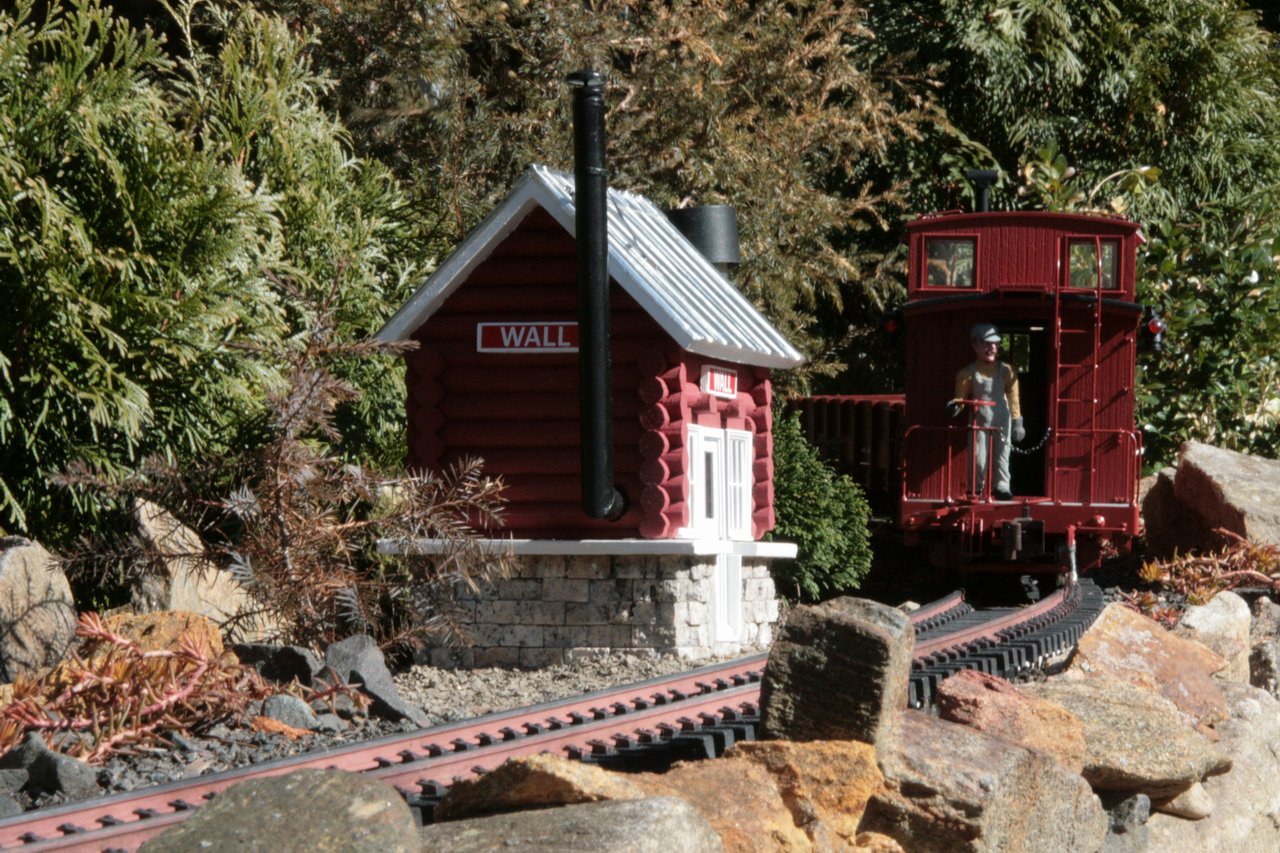I’m getting ready to place the new Wall Station (see this thread for details) out on the layout. The old Wall Station was an empty raised platform with an outhouse…
The new station will have a track level platform with the new station building and a to-be-constructed platform shelter sitting in this same area. It would be a simple matter to cut a piece of 6mm PVC to fit nice against the curved track then paint it gray with a yellow stripe at the track edge - OR - I could excavate a few inches of the existing ballast and fill, and pour a platform from topping mix and/or mortar mix.
The PVC option is quicker - I could probably have it finished tomorrow, but I really like the look of real concrete. This area is the #1 photo location on the railroad, so it begs to be done right. The other advantage of concrete is that I can make spots to sink the platform shelter timbers enhancing the realism of that structure as well.
OK - You’ve talked me into it. I’ll probably just place the station on the ballast for now until it’s warm enough to pour concrete.
